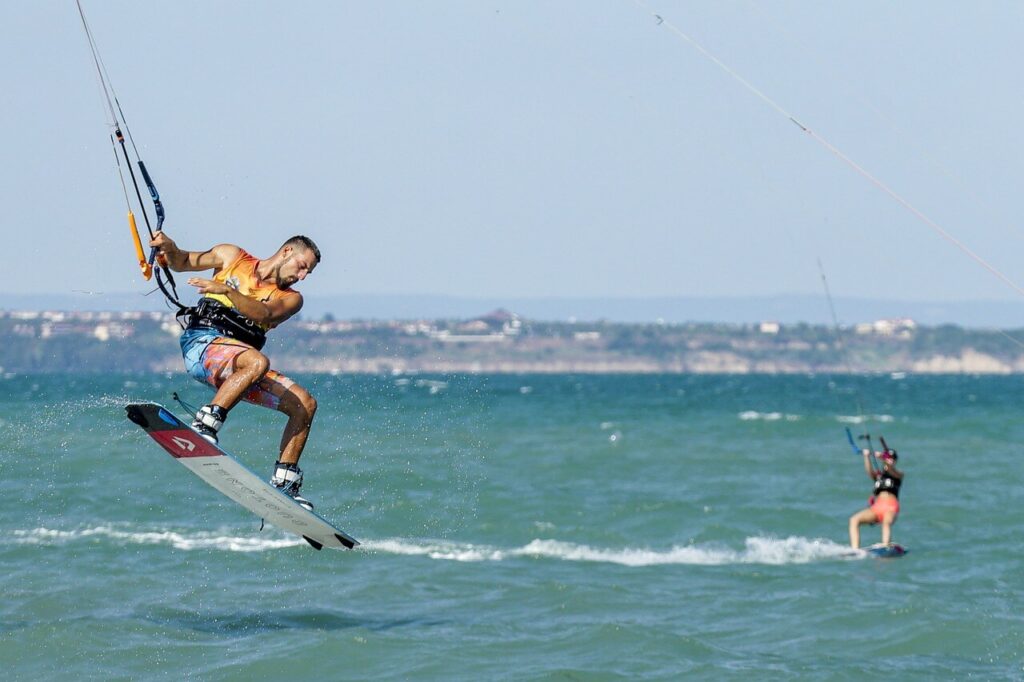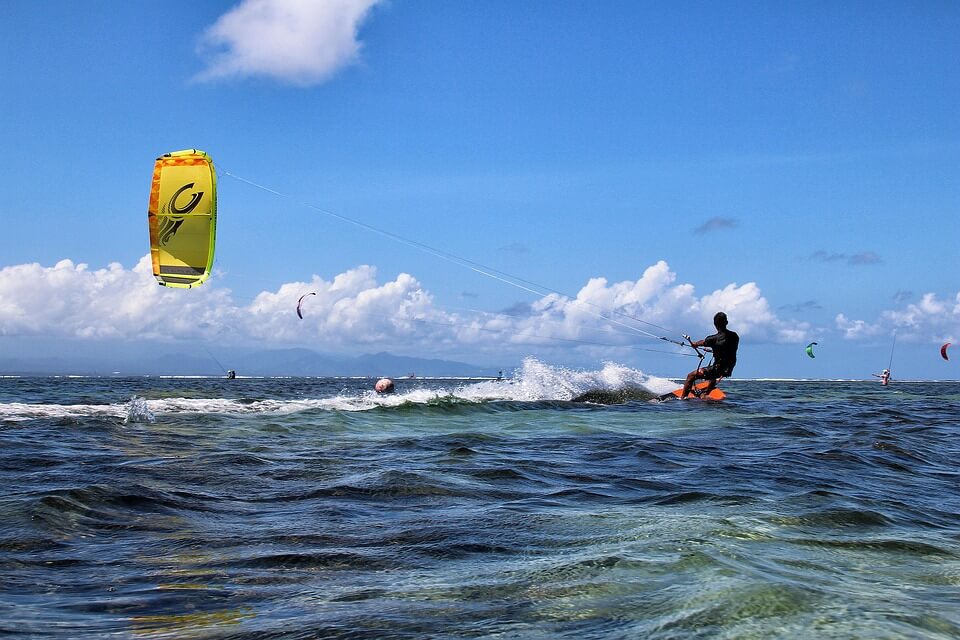
Kiteboarding, also known as kitesurfing, is an exhilarating water sport that combines elements of windsurfing, wakeboarding, and paragliding. It’s one of the most exciting adventure sports that offers high-speed sailing, and surfing to the riders who are pulled across the water by a kite, using the power of the wind. It is a sport that encourages creativity, physical fitness, and a deep connection with nature. Whether you’re performing aerial tricks, or racing across the water, kiteboarding is an exciting hobby for those looking to experience the ultimate wind-powered thrill.
Kiteboarding has become one of the most exciting and popular water sports globally. It’s practiced in coastal regions around the world, from Hawaii to the Caribbean, Europe, and Africa. With professional competitions, such as the Kiteboarding World Cup and Red Bull King of the Air, attracting top riders, the sport continues to grow, with riders pushing the limits of what is possible in both speed and aerial stunts.
Kiteboarding involves two main components: the kite and the board. The kite used in kiteboarding is a large, inflatable or foil kite designed to harness wind power depending on the wind conditions and the rider’s weight. It is controlled by the rider using control lines, which allow the kite to fly in various directions. The rider stands on a small foot-strapped wakeboard, surfboard, or skateboard based on the type of water conditions and personal preference. A harness attaching the rider to the kite allows them to use their body weight to control the kite without relying on their arms.
The kite is steered using the control lines held by the rider in both hands. The rider can control the kite’s speed and direction, adjusting the kite’s position in the air to generate the appropriate amount of power. Once the kite is flying, the rider needs to get up onto the board maintaining their balance on the board. A leash that attaches the rider to the kite, providing safety in case the kite gets away or the rider falls.
Types of Kiteboarding

There are various styles and types of kiteboarding, each emphasizing different aspects of the sport:
- Freestyle Kiteboarding: This style focuses on performing tricks like spins, flips, and high jumps using the power of the kite.
- Wave Riding: Riders use the kite to surf the waves to perform turns and manoeuvres with or without a twin-tip board (a board that can be ridden in either direction).
- Racing: involves speed and precision racing, where riders race around marked courses or along straight tracks. Racing is one of the most competitive aspects of the sport.
- Freeride: A combination of freestyle and wave riding. Riders search for perfect waves or flat water for tricks and jumps.
- Big Air: requires a large kite and a strong wind, as riders try to launch themselves as high as possible into the air.
- Kitefoiling: involves riding a hydrofoil board that lifts the rider above the water. It also enables kite boarders to perform high-speed turns and more advanced manoeuvres.
Also Read: From military to adventure sport: history and traditions of kite flying
Safety in Kiteboarding

Kiteboarding can be dangerous, especially in strong winds or unfamiliar conditions. Therefore, safety is paramount. Beginners are advised to take lessons from certified instructors to learn the basics of kite control, water starts, and safety protocols as well as wear a helmet, life jacket, and impact vest for protection in case of falls or accidents. Kiteboarding in high winds or storms can be particularly hazardous, hence riders must understand the wind conditions and know when it’s safe to ride. Kite boarders are also advised to learn how to save themselves in case they get separated from their kite or face equipment failure.

